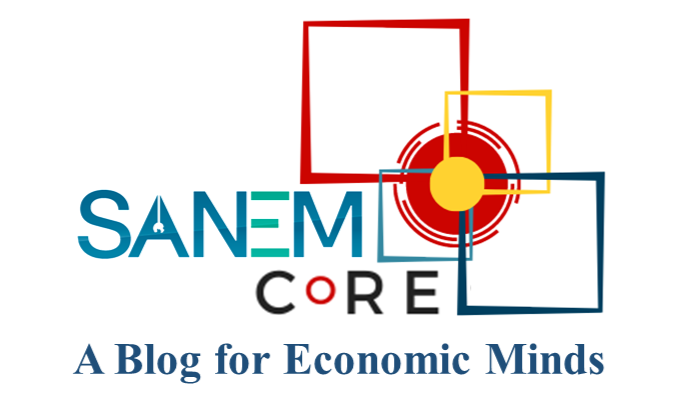Bangladesh is primarily an agrarian economy. Agriculture is the largest productive sector of the economy employing around 50 percent of the total labour force. Performance of this sector has a tremendous impact on major macroeconomic goals such as food security, employment generation, and poverty alleviation. However, farmers are often deprived of the fair price of their products due to the lack of proper supervision from the government. On the other hand, consumers buy products at a higher price and in the end, the middlemen are the ultimate beneficiaries. One of the major causes of this problem is asymmetric information system associated with the agricultural market mechanism.
In order to limit food price volatility and to ensure proper functioning of food commodity markets, the Sustainable Development Goal (SDG) 2.c targets to facilitate timely access to market information. In response to SDG 2.c and recent extreme volatility of food prices, improving Agricultural Market Information System (AMIS) has become a pressing issue in Bangladesh.
AMIS can revolutionise the value chain processes by removing the knowledge gap and analysing data and presenting different angles to tackle the issues. We can distinguish the data set provided by an efficient AMIS into “current” market information and “historical” information where the current market information meets the immediate business needs of farmers and traders, and the “historical” information, when analysed, can be used for planning purposes by farmers and policymakers. Hence, an efficient AMIS should provide a detailed understanding of the product cycle, market demand & supply and how the prices of goods are determined, which are completely absent in the current agricultural market information system of Bangladesh. Although some agriculture-related institutions are trying to enrich the system, the information provided is mostly related to production technology and current retail prices which is by no means sufficient for the farmers. Besides, the current system does not provide any information related to future prediction, seasonal demand & supply change which are crucial for making production decisions. Moreover, the process of disseminating information is inefficient and the web portals are not user-friendly where farmers need assistance in interpreting the information required by additional trained agriculture extension staff.
In contrast, poor people spend majority of their income on buying food, while farmers derive much of their income from producing food. Therefore, changes in food prices have a significant impact on the welfare of both farmers and poor consumers. There are three types of undesirable situations that may arise in the market: i) very low food price, ii) very high food price and iii) volatile food price. Poor consumers benefit when food prices are low, but farmers suffer huge losses and lose interest in agriculture, which in turn reduces investment in agriculture. Conversely, net food buyers (total value of the food they consume exceeds the total value of the food they produce) generally suffer at higher food price whereas net food sellers (total value of the food they produce exceeds the total value of the food they consume) get benefited. Evidently, we can say that all urban dwellers and rural landless households are net food buyers. On the other hand, farmers are considered as the net food sellers which are not necessarily true in Bangladesh. Because over 76 percent of the farmers in Bangladesh are small and marginal. Besides, according to the study (Selim Raihan, 2015), small farmers and marginal farmers procure about 44 percent and 80 percent respectively of their consumption needs from the market. In contrast, the middlemen are making supernormal profits by capitalising on the fragile state of agro-market management.
The third one — volatile food price is the most dangerous compared to higher and lower food prices. Because, when prices fluctuate substantially, it pushes both small and marginal farmers and poor consumers into the risk of prolonged poverty. Lately, the trend in prices of necessary food items in Bangladesh has been incessantly fluctuating. For instance, the volatility of rice prices in Bangladesh is much higher than the countries we import rice from, i.e., India, Thailand, Myanmar. Although Bangladesh is self-sufficient in food production, such a scenario undoubtedly points to the inadequacy of the market information system.
Desk reviews have revealed that efficient market information systems have the potential to enable farmers to produce diversified crops. Besides, there is a strong demand for investment in potential horticultural crops such as flowers, fruits, vegetables, spices, etc., for both domestic and export markets. So, Agricultural Market Information System (AMIS) should also provide commercially useful information about foreign markets, exports, and imports of all potential crops for farmers and traders. Moreover, information about seasonal price movements needs to be made available on time to contribute to a more equitable balance between urban demand and the farmers’ supply. In this case, government can make maximum use of ICT to deliver information to poor rural communities and link them to remunerative markets. Lately, a few mobile operator companies have launched some agriculture services, but the range of information is limited. Hence, government, as well as agriculture companies, NGOs and different service providers, will have to come forward.
These improvements in Agricultural Market Information System would make food more affordable for consumers and more profitable for farmers. Therefore, through the development of efficient AMIS, food prices can be managed in a way that benefits everyone.



RECENT COMMENTS